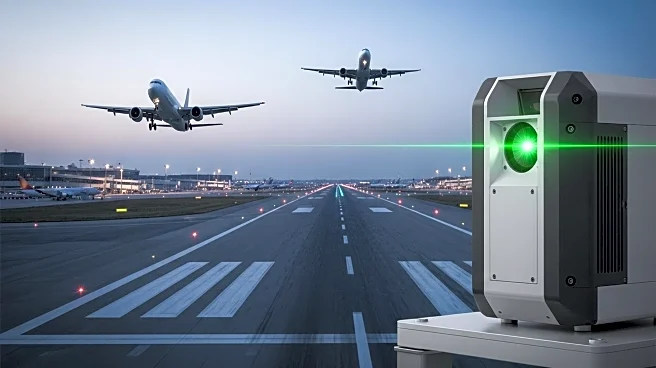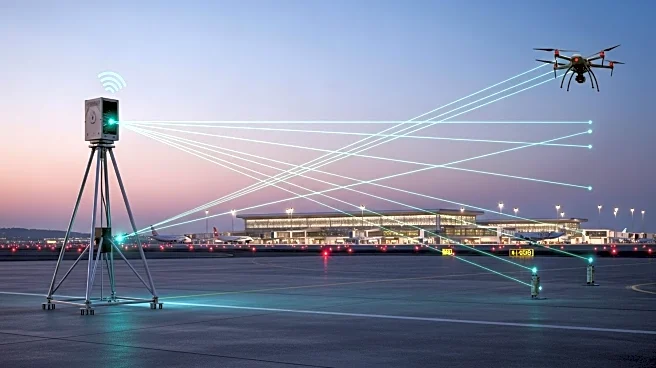What's Happening?
A new multi-sensor integration system has been developed for rapid mobile inspection of metro tunnels. The system combines high-precision laser scanners, CCD cameras, and GNSS/IMU/DMI positioning sensors to collect comprehensive data on tunnel conditions. Designed for various tunnel types, the equipment can detect structural issues with high accuracy and efficiency. It operates at speeds up to 10 km/h and can achieve resolutions of 2048x4098 pixels. The system is detachable for easy transport and assembly, allowing quick deployment in tunnels. It aims to improve the accuracy and efficiency of tunnel inspections, providing high-quality 3D point cloud data and high-definition images.
Why It's Important?
The development of this system addresses the need for efficient and accurate tunnel inspections, which are crucial for maintaining infrastructure safety. By integrating multiple sensors, the system can detect structural issues that may not be visible to the naked eye, potentially preventing accidents and ensuring the longevity of metro tunnels. The ability to operate at high speeds and resolutions enhances the inspection process, reducing downtime and improving maintenance schedules. This technology could be adopted by metro systems worldwide, improving safety standards and operational efficiency.
What's Next?
The system's deployment in metro tunnels could lead to widespread adoption in other infrastructure inspections, such as bridges and highways. Future developments may focus on enhancing the system's capabilities, such as increasing its speed and resolution or integrating additional sensors for more comprehensive data collection. As the technology evolves, it could become a standard tool for infrastructure maintenance, improving safety and efficiency across various sectors.
Beyond the Headlines
The integration of advanced sensor technology in infrastructure inspections represents a significant shift towards more proactive maintenance strategies. By detecting issues early, this system could reduce repair costs and extend the lifespan of critical infrastructure, contributing to more sustainable urban development.










